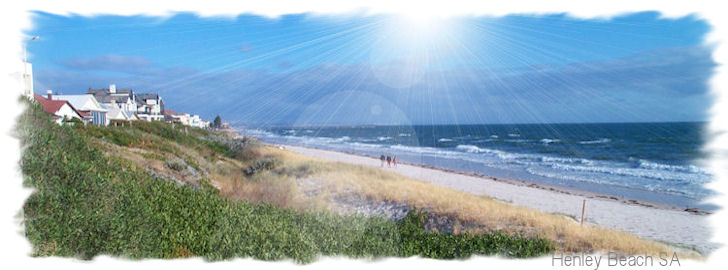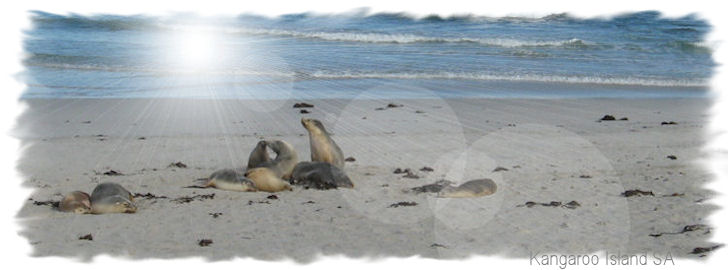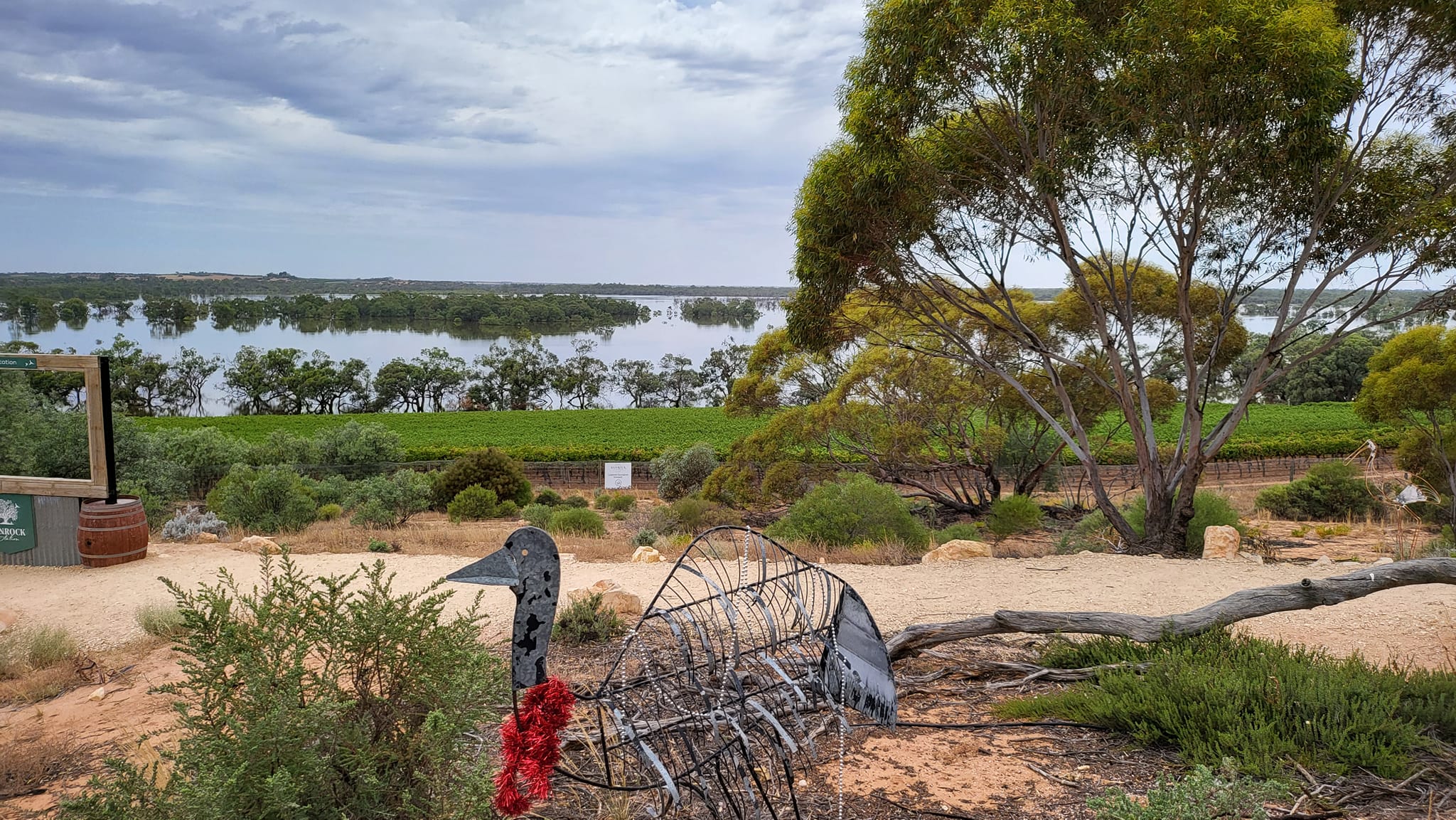The driest state in the second driest continent, South Australia’s cosmopolitan culture, unhurried pace of life, festivals, masses of eateries, ancient landscapes and huge wine growing areas make it an exceptional touring and holiday destination.
There’s 3,700 kilometres of coastline from seaside cliffs edging the Nullabor Plain to Gulf St Vincent, The Coorong and Kangaroo Island.
The South Australian coastline was first sighted by the Dutch in 1627 but it wasn’t until 1829-30 Charles Sturt sailed down the Murray River in a whaleboat that its potential was recognised. Colonel LIght surveyed the site of the city in 1836.
The Nullarbor Plain, Coorong, wild beaches of Kangaroo Island, vast salt Lake Eyre and grape vines for as far as the eye can see, this state settled by free settlers (not convicts) incorporates many cultures, most notably the Germans who first arrived in 1838.
70% of the population lives in Adelaide (Tandanya) which is set on the wide curves of the River Torrens ( Karra-Wirra-Parri). This planned city is easy to get around, no obscure meandering streets. It’s gracious, known as the City Of Churches, and it doesn’t take long to escape to the Hills, the Beach or the Vineyards. It is hom eto Australia’s oldest Catholic Church – St Francis Xavier.
Tandanya is the city of Adelaide itself, the land south of the river. Tarndanya is certainly based on tarnda ‘red kangaroo’ the principal Dreaming of the area and possibly refers directly to a rock formation south of the Torrens which was quarried in the early years of the colony. This rock formation, the tarnda kanya ‘red kangaroo rock’ was probably located where the Festival Theatre stands today. A number of south Australia’s earliest buildings, including the south Australian Company’s Commercial Offices and Holy Trinity Church on North Terrace were built from stone quarried from this site
The River Torrens. Karra means red gum tree, Wirra means forest and Parri means river.
DON’T MISS
Adelaide Casino, Festival Centre, Art Gallery, Botanic Garden, Central Market, Glenelg, Light’s Vision, Rundle Street and St Peter’s Cathedral, Bombay Bicycle Club, Wheatsheaf Hotel, The Tap Inn
TOP EVENTS
Schutzenfest (Jan)
Tour Down Under (Jan)
Womadelaide (Feb – odd numbered years)
Festival of the Arts and the Fringe (Feb-March even numbered years)
Glendi Festival (March)
500 – V8 super cars (April)
Tasting Australia (Oct – odd numbered years
Wildlife Watching
South of Adelaide at Victor Harbor the South Australian Whale Centre will be your best guide on where the more than 25 whale and dolphin species swim off the SA coast. Granite Island, connected by causeway to Victor is a haven for fairy penguins which are best seen at sunset.
Kangaroo Island also has a healthy population of fairy penguins, sea-lions, 240 bird species, kangaroos, koalas, tammar, wallabies and platypus.
Bent-wing Bats migrate each spring to the Bat Cave at Naracoorte Caves Conservation Park. 17 kilometres south of Naracoorte the Bool Lagoon provides refuge for many rare and endangered birds.
You’ll need binoculars to view pelicans, crested terns and silver gulls on the Coorong. Pied Oystercatchers feed along the beach while flocks of tiny red-necked Stints migrate from Siberia via Japan each year.
To cross the Nullarbor it would be easy to skip the foot of Eyre Peninsula but then you would miss out on the only permanent colony of Australian Sea-Lions on the islands off Tumby Bay. It is also the largest breeding ground for Cape Barren Geese. You can get a closer view of sea mammals at Point Labatt Conservation Park near Streaky Bay.
From June to October Southern Right Whales can be viewed from the cliffs in the Great Australian Bight Marine Park. It is on Yalata Aboriginal Land so a permit is required.
Riverland Winery Tour
From Blanchetown to Renmark, you’ll find a host of welcoming towns in the Riverland. Enjoy the local hospitality, water activities, golf courses, wines and more. Use them as a starting point for your river adventure, or spend time in town discovering its history, local produce and more.
I was born and raised in the Riverland. My parents had relocated from the Adelaide Hills where bush fires made them flee for their lives.
Until you’ve been here you have not seen vineyards. Thousands of acres of them, they represent the workhorse of the Australian Wine Industry.
The Riverland is also home to the largest winery in Australia Berri Estates Winery is situated at Glossop in the heart of South Australia’s Riverland between Berri and Barmera.
The region is home to many smaller wineries:
- http://www.banrockstation.com/ – Kingston-on-Murray
- http://www.francasvineyard.com/ – Pike River
- http://www.burksalterwines.com.au/ – Blanchetown
- http://www.kingstonestatewines.com/ – Kingston-on-Murray
- http://www.malleeestatewines.com.au/ – Renmark
- http://www.nookamkaestate.com.au/ – Barmera
- http://www.salenaestate.com.au/ – Loxton
- http://www.tomsdrop.com.au/ – Berri
But it’s not all about wine. The region has always had a high population of Greeks, Italians and Lebanese. You will find roadside stalls with fresh produce.
Look out for “Aggies” fruit stall on the Sturt Highway heading toward Berri, about a kilometre from the Berri Estates Winery. She’s worked that stall since we were all at Primary School.
Just north of Renmark at Murtho the Woolshed Brewery is another place definitely worth a visit. They also have accommodation and houseboats for hire.
A Tour to Remember:
Outback Adventure: Quorn to Blinman via Wilpena Pound and Arkaroola (702 km) 7-8 days will allow enough time to view the unexpected…. . that something special that makes your trip unique.
Tour begins at Quorn, an old railway town built in 1880s
Warren Gorge – one of the prettiest gorges in the Flinders Ranges and an ideal campsite. At dawn and dusk you can see yellow-footed rock wallabies that inhabit the gorge.
Kanyaka Homestead Historic Site – Built in 1851 but abandoned in 1888 after years of drought and flood. In 1864 some 40,000 sheep were shorn here.
Yourambulla Caves – there are two rock shelters, both 30 minutes walk from the car park. The largest shelter features charcoal drawings and other yellow ochre paintings including hand stencils.
Jarvis Hill Lookout – near Hawker, provides panoramic views of Flinders Ranges and the flat arid landscape from which it emerges.
Arkaroo Rock – an important rock art site on the slopes of Rawnsley Bluff – down a 2 kilometre walking track.
Wilpena Pound – to reach the famous dish-shaped formation you can either catch a shuttle bus from the Visitor Centre or walk for 45 minutes from the car park. At dawn and dusk you can see euros (a type of kangaroo)
Sacred Canyon – the walls have been engraved with images of animal tracks, human figures and waterholes; a rock shelter at the end of the gorge has been painted with ochre.
Bunyeroo Gorge – due to its permanent water supply, the gorge is full of plant and animal life. Kangaroos, emus, corellas, galahs, honeyeaters, and wedge-tailed eagles abound and at ground level look out for geckos, blue-tongued lizards, bearded dragons and snakes – don’t worry they’re just as curious and will more likely scuttle off just to get away from you.
Aroona Valley – inspiration for Sir Hans Heysen paintings. His hut has recently been restored.
Brachina Gorge – another favourite Heysen subject. Fossils at the end of the gorge date back 500 – 1000 million years.
Beltana – the abandoned town is classified as a State historic site. Once busy with copper mining.
Leigh Creek – a modern town servicing the open-cut coalmine 22 kilometres north. A 2 kilometre train transports about 9,000 tonnes of coal to Port Augusta every day.
Arkaroola Wilderness Sanctuary – worthy of a 2 day stay. Take the Ridgetop Tour or a scenic flight for spectacular views. Learn about bush tucker and bush medicine. Position yourself in front of waterhole at dawn and dusk to observe the animals that come down to feed.
Mount Chambers Gorge – access does require fording streams several times but the wildlife will be worth it and you can even see the gorgeous crimson Sturt’s Desert Pea.
Blinman – the highest town in the state at 610 metres. Once a thriving coppermining town it now exists for a much quieter reason. There are many stories in the cemetery.


